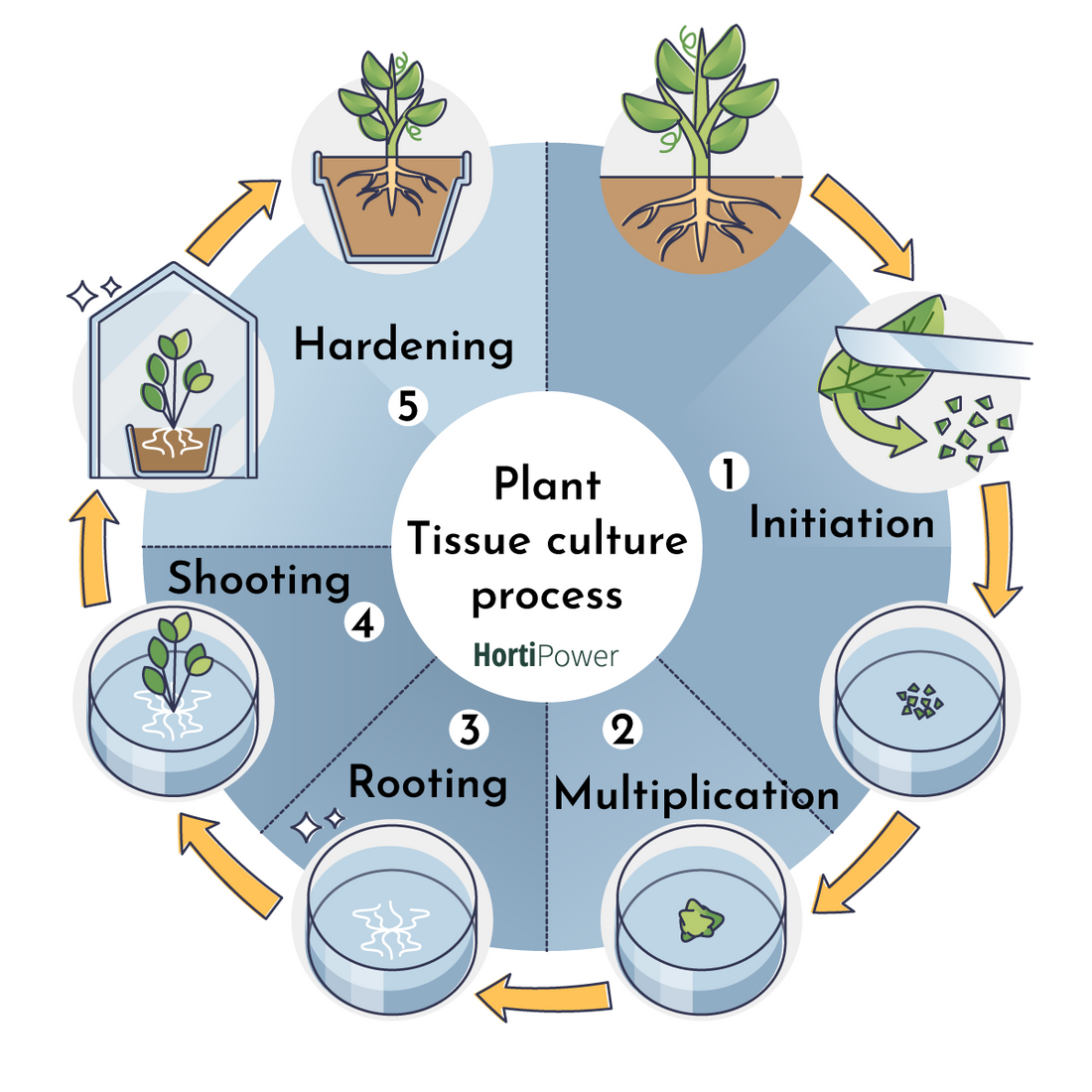Tissue Culture and Lighting: 8 Best Practices
originally published at 19 July 2022, updated 8 Feb 2024
For crops such as Banana, Pineapple, and Orchids the use of tissue culture is the most preferred way to propagate good quality plants. The benefits of tissue culture are numerous, the plants are disease free, it is possible to grow throughout the year and many plants can be grown efficiently and at scale. Tissue culture has a long history and has been around since the 1950s, it plays a very important role in feeding the world. Due to the need for a sterile environment, tissue culture is conducted indoors and requires electric lighting to support plant tissue culture growth and development.
by Jille Kuipers

A plant tissue culture lab requires a near-sterile environment and special lighting to support growth and development
Here are 8 best practices for tissue culture lighting:
Table of Contents
1. Get the right intensity, and more light is not always better
Each cultivar may have different lighting preferences. Starting with a low light intensity is often preferred compared to high intensity. This is because plant tissue culture can be easily burned by an overdose of light. Tissue culture may require as little as 10 micromoles and up to 100 micromoles depending on the cultivar and growth stage. This means you would need to select lights with a PAR output of 20 micromoles to around 60 micromoles and the spacing would be about 10 to 30cm, depending on shelf width.

The lighting in tissue culture labs must be uniform and of the right intensity, so that all bottles receive the right amount of light
In general, these lights are installed about 15 to 25 cm from the top of the tissue culture bag, container or bottle. It is important to consider the height to the top of the container or bottle, as that is the potential maximum height of the top leaf. In some cases, it would be good to measure the translucency of the cap or plastic.
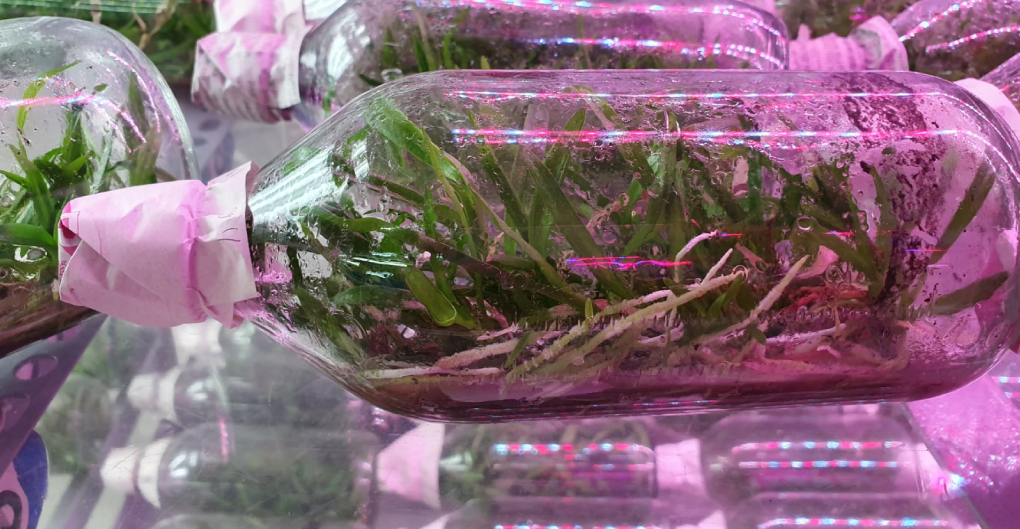
Dendrobium tissue culture under HortiPower light in a glass bottle. Tissue culture can be cultivated in plastic bags, plastic boxes or even glass jars.
Plastic containers with a plastic film may block up to 2% of light. A plastic cap can block as much as 10% of light. Lights such as Nurser 1, Nurser 3 and Nurser 4 are designed with dimmability so that there can be a very consistent light output in larger or smaller amounts.

We use micromoles instead of lux to measure the amount of light on the tissue culture. This is because the photoreceptors for plants are sensitive to a different kind of light vs people. Read our other blogs to understand more about this. In the above graph you'll see that plants are relatively more sensitive to red and blue and relatively less to green. The lux and lumen values which indicate brightness for the human eye include little blue and red, hence lux and lumen are not accurate metrics for tissue culture lighting and micromoles should be used instead.
2. Uniformity in lighting design
Uniformity of light is essential in tissue culture. Most labs use shelves and the uniformity in the center of the shelf as well as the edges is important. Otherwise, the tissue culture will respond and develop differently which makes it difficult to grow consistently. The goal is to get consistent development and growth across the whole shelf. Choose a fixture with a wide beam angle so light is widely dispersed and there aren’t any light spots. The light beam angle is an angular expression that reveals how light is emitted from a light source. Beam angles can vary, note that fluorescent light emits light at a 360degree angle which means some of the light is emitted upwards, instead of downwards to the tissue culture. Since tissue culture shelves are rectangular, we recommend light sources with a beam angle 100 to 120 degrees.

Fluorescent lighting is widely used in tissue culture labs. However it is energy inefficient and its beam-angle is omnidirectional (360degrees) and only a small amount of light is projected downwards on the tissue culture.

3. The Right Light will give you Better Growth
Different tissue cultures have different needs for lighting intensity, photoperiod, spectrum and other factors. For example for bananas, the amount of light that the cavendish variety prefers can differ from other banana varieties.
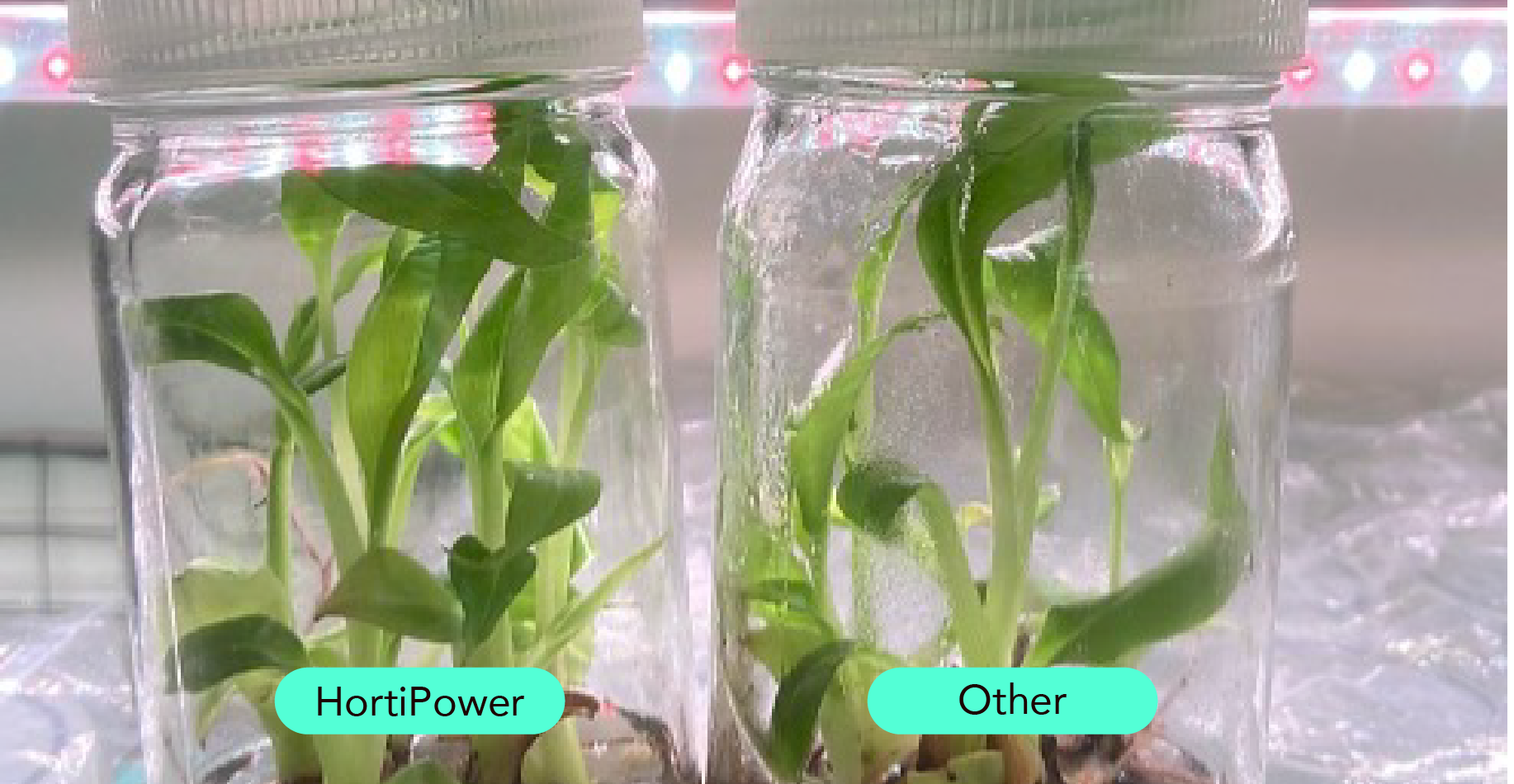
House of Musa by L. Vine PhD is cultivating different banana varieties. They noticed a significant improvement in growth rate and development under Nurser 3 lights from HortiPower
Note that fluorescent lights are made for the human eye which has a different sensitivity compared to the photoreceptors from plant tissue culture.
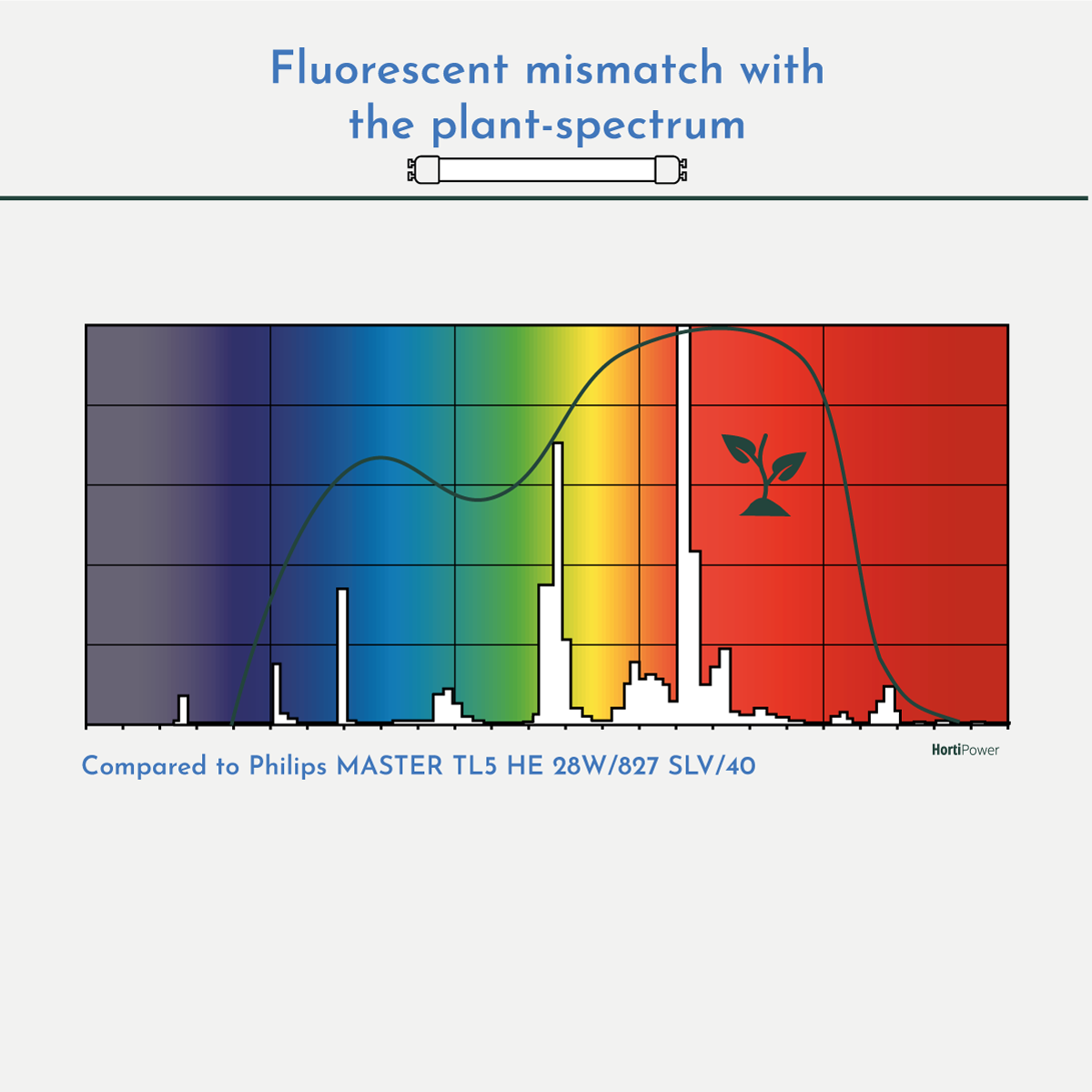
Fluorescent lighting spectrums (such as Philips MASTER TL5 HE 28W/827 SLV/40) do not match well with the plant spectrum. Using a special tissue culture lighting fixture is therefore recommended.
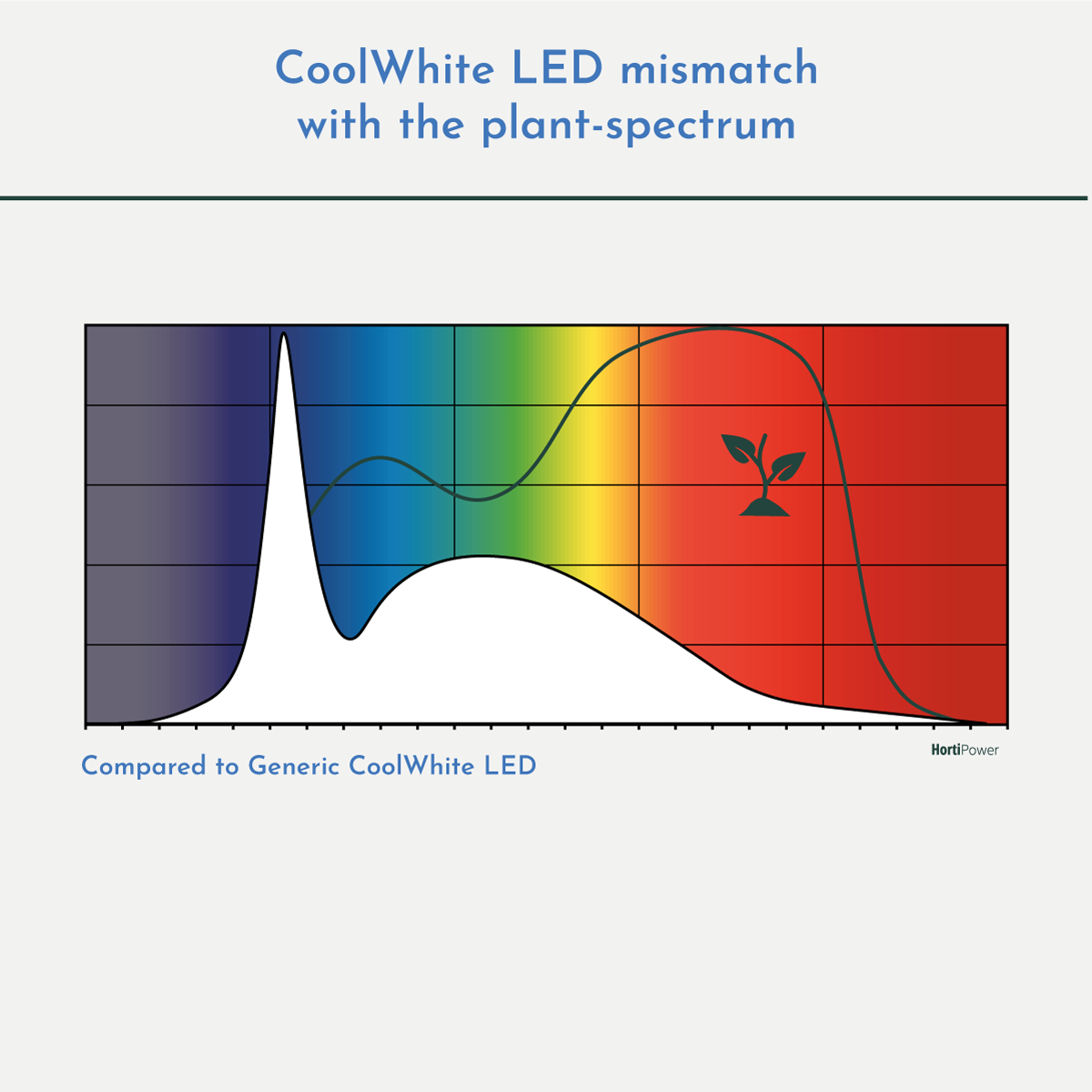
CoolWhite LED lighting spectrums do not match well with the plant spectrum. Using a special tissue culture lighting fixture is therefore recommended.
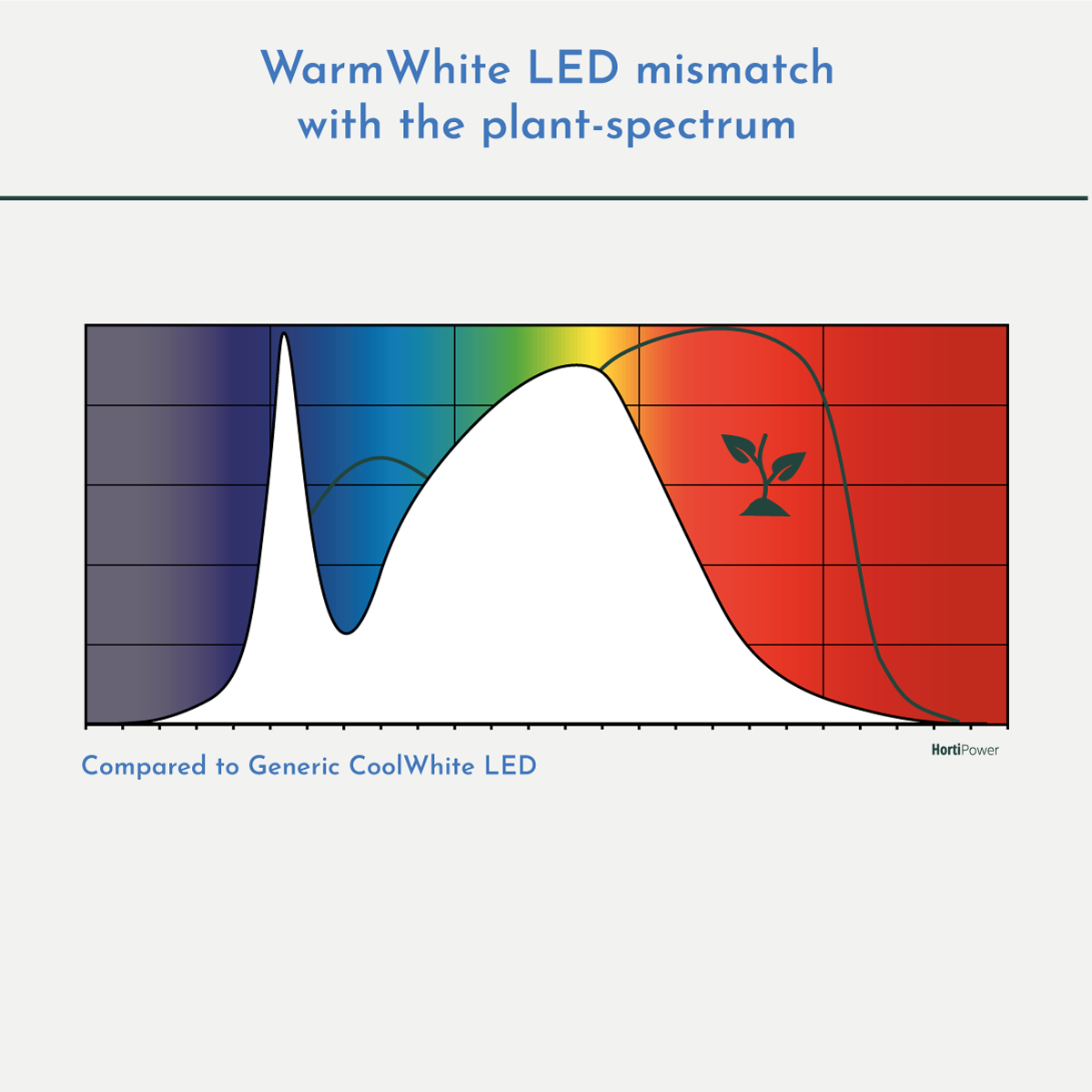
Warmwhite LED lighting spectrums do not match well with the plant spectrum. Using a special tissue culture lighting fixture is therefore recommended.
The right type of light grows stronger and better tissue culture
4. Match light with growth stages
Tissue culture is divided into growth stages. It makes sense to change lighting settings when the tissue culture moves from one stage to the next. This is about the intensity as well as the photoperiod and spectrum.

A side-by-side image comparison showcasing the remarkable results of banana tissue culture under HortiPower lighting (left) and traditional lighting methods (right).
Providing young tissue culture with the appropriate type and quantity of light such as Nurser 3 is crucial. Not only does it optimize their development, but it also sets the stage for long-term growth even after transplantation. "Just like tending to a baby, nurturing them during their early stages ensures strength and vitality as they grow" says Jille Kuipers.
5. Temperature and Heat
Light and temperature are two important growth-environment factors that influence the photosynthesis rate. Note that tissue culture grows often in labs that are fully climate controlled and many of these labs use air-conditioning. Keeping these temperatures stable during the day is important as it can influence the development or photosynthesis rate. In general, slightly cooler nights are recommended and lights should be turned off at night to give the tissue culture time to rest and recover. In contrast to fluorescent lights, the light beam from LEDs itself is cool. This is a great benefit of LED, however, the LED chips still dissipate heat to the heatsink and fixture and the fixture is often passively cooled. Therefore it is better to choose fixtures that are designed for tissue culture labs such as Nurser 1 and Nurser 3 so that heat is minimised. The BTU loads are 68 for both Nurser 1 and Nurser 3 and a maximum BTU of 102 for Nurser 4 at maximum power. Another benefit of bringing the lights closer to the tissue culture is that it allows for lower wattage use. It is more energy efficient and releases less heat.
6. Ease of installation and use
The laboratory often has different sections and shelves for either different kinds of tissue culture or different growth stages. Easy and local management by staff is therefore important. Lights such as Nurser 3 can be daisy chained up to 15pcs and can be easily connected to a wall switch or inline switch. It can also work with a simple analog or digital time switch so it is easier to operate.
Nurser 4 has a full range of control options and is designed for high-end laboratories that conduct research and trials.
7. Affordability and return on investment
For labs that operate with fluorescent lighting, the upgrade to LEDs will pay itself back in less than 2 years. This is because LEDs will save energy costs, and maintenance costs (because of fewer replacements) and increase productivity.
8. Try it, go for evidence-based lighting
Before you change the whole lab, it is suggested to conduct a trial with HortiPower lighting. So you’ll see how the tissue culture responds and it allows you to fine-tune before fitting out the whole lab. This step is recommended if you are growing at large and commercial scale.
How to get started with tissue culture lighting in a small lab or at home
If you're working in a smaller lab or even doing tissue culture at home, you could consider starting with the Nurser 3 lights. Here's an example setup for tropical plant tissue culture: Position the lights about 20cm above the top of your tissue culture box or bag, with a spacing of 15 to 20cm between the lights. For a 50cm wide shelf, use two lights with a spacing of around 16cm. The Nurser 3 system comes in different lengths: 1200mm (4ft), 875mm, 600mm (2ft), and 450mm.
If you need specific suggestions for your rack, shelf, climate cell, or climate chamber, feel free to reach out to us via email. We're here to help!
Read our other blog about problems with tissue culture.
Get your Nurser 3 now to try it out. Or contact us if you need help in proposing the best lights for your lab, so your tissue culture can grow well and you can get more business.

